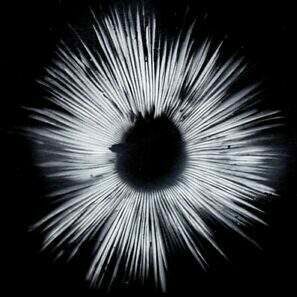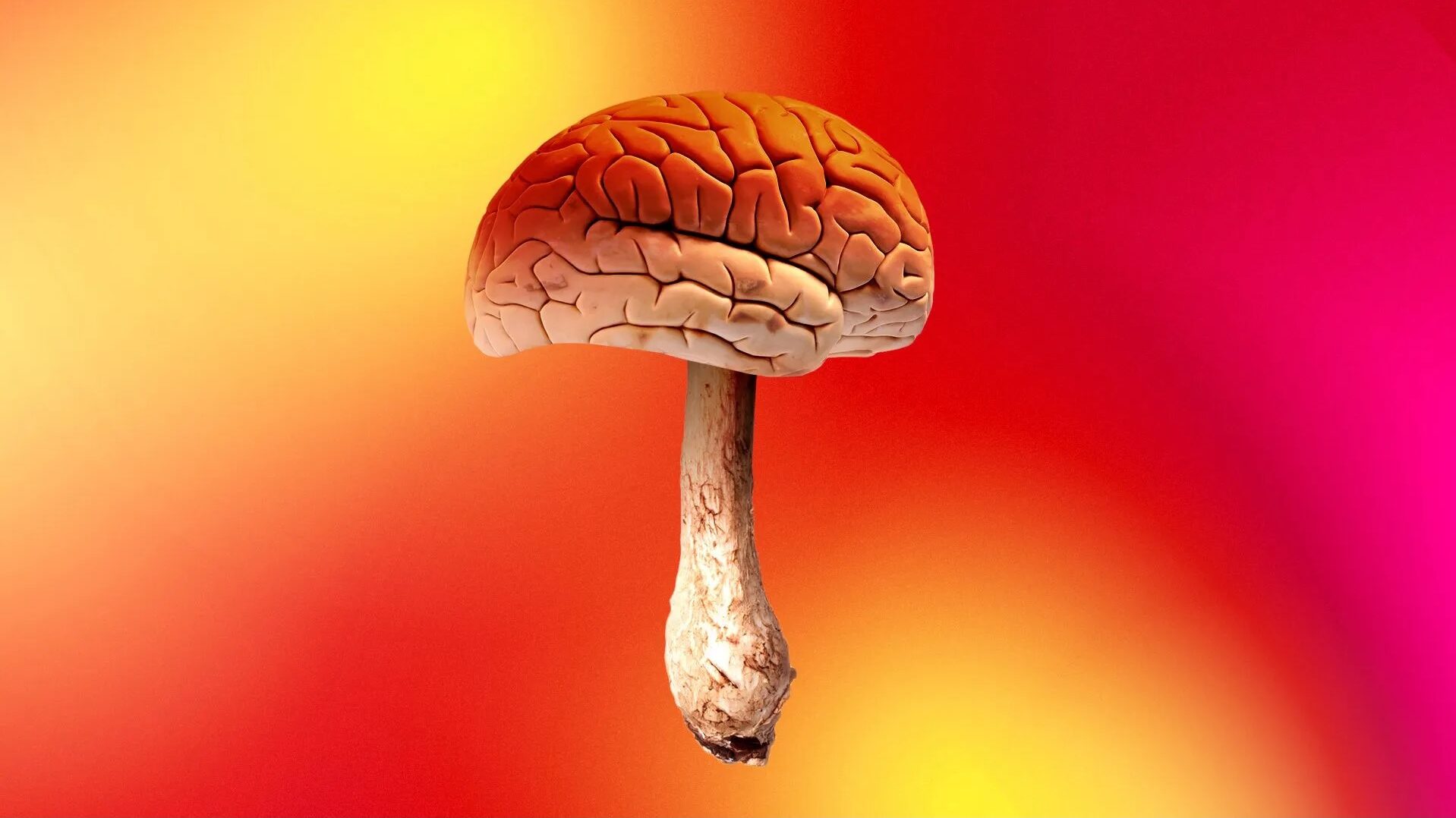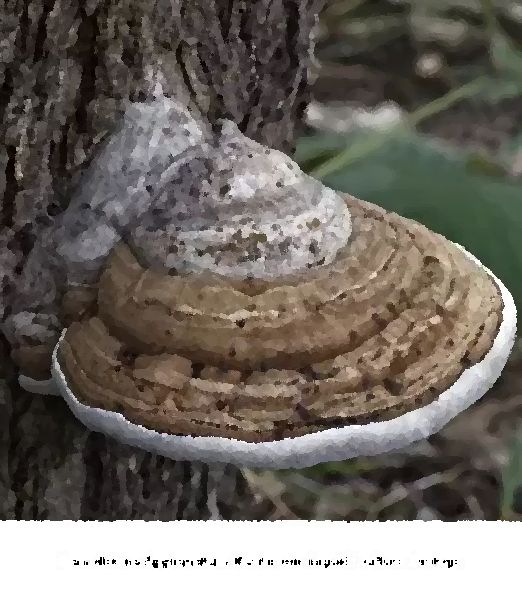
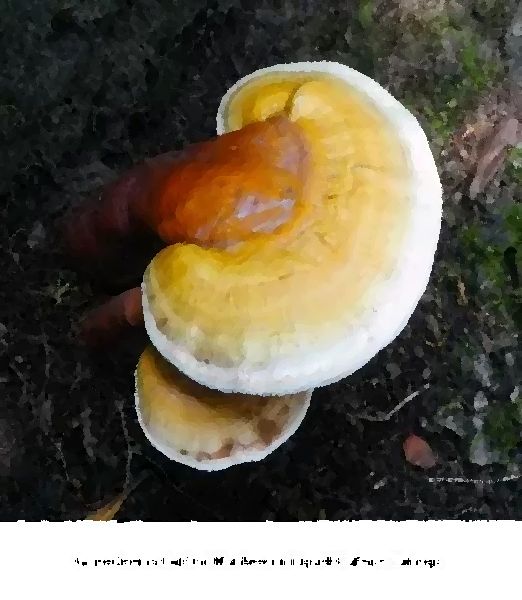

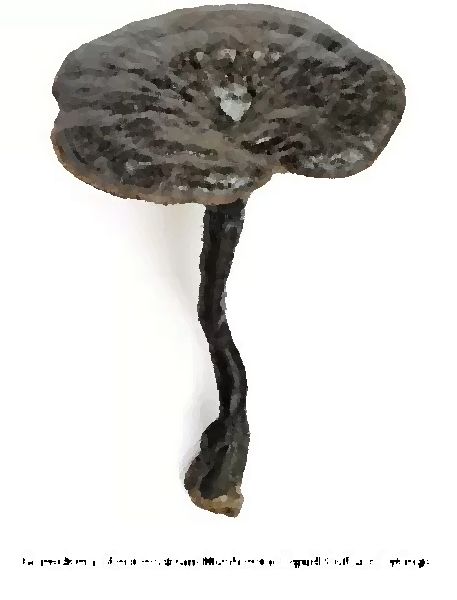
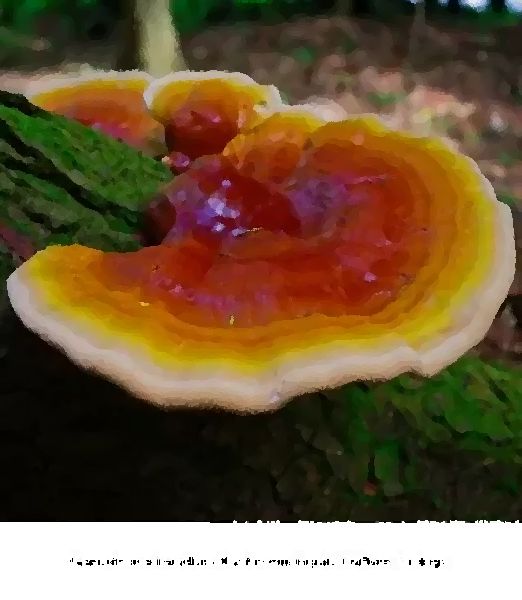
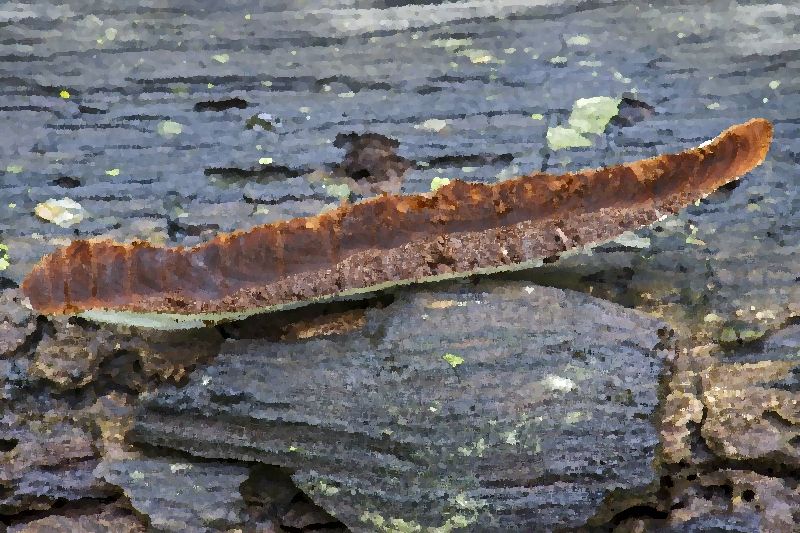
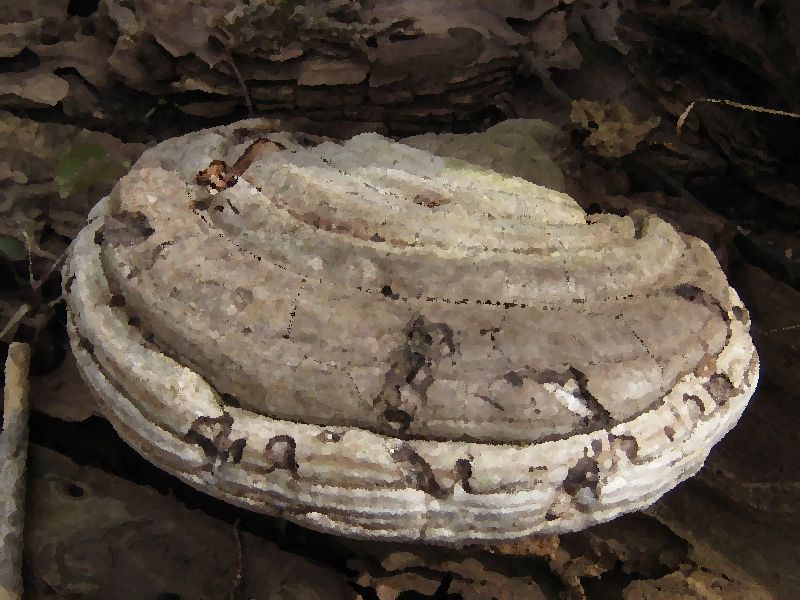
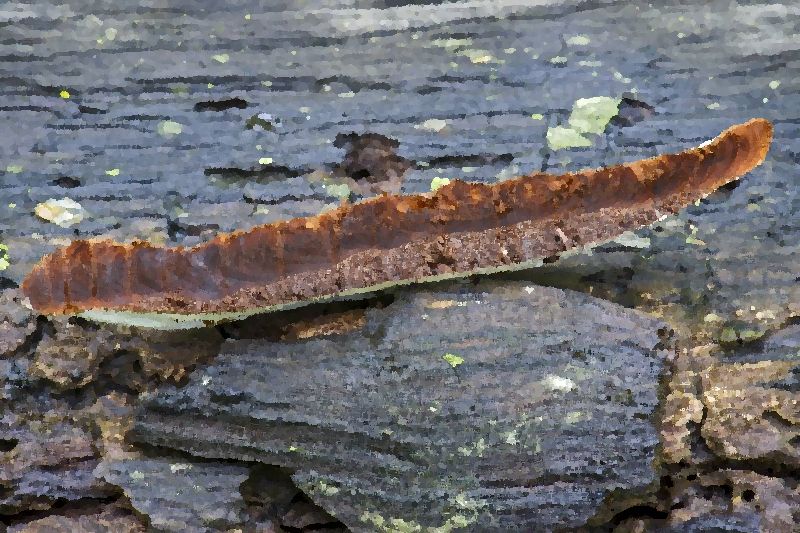
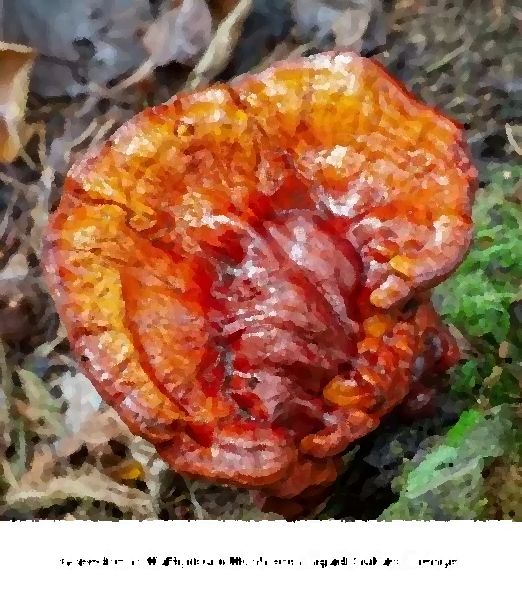
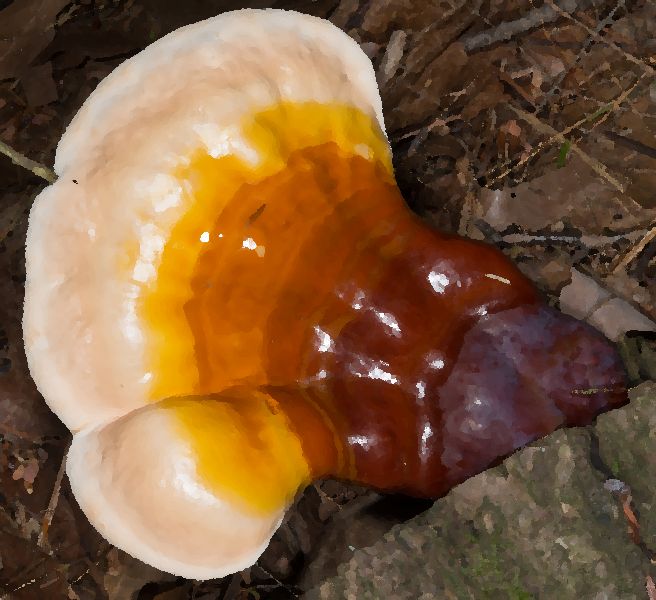
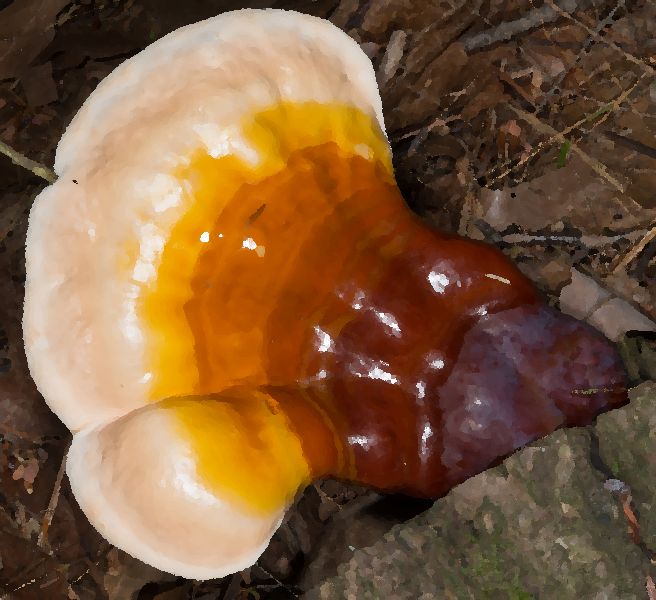
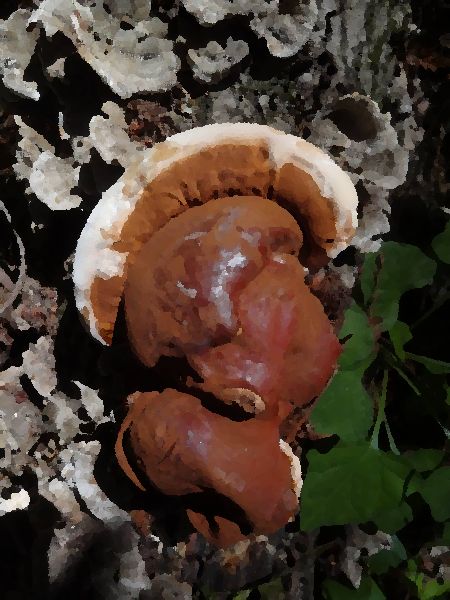


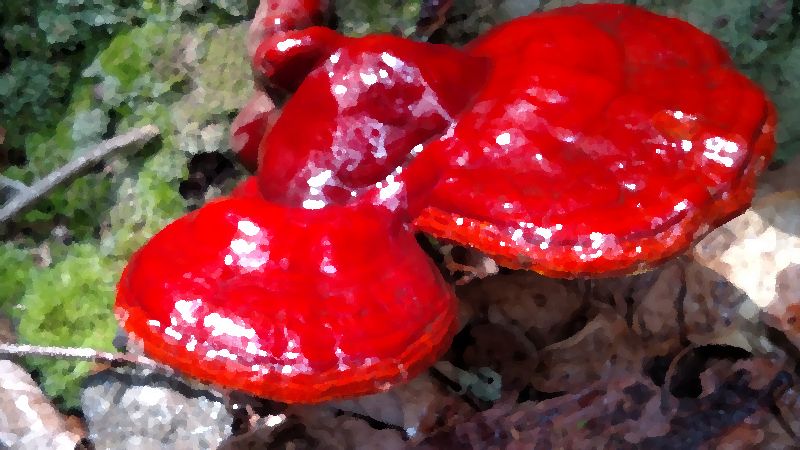
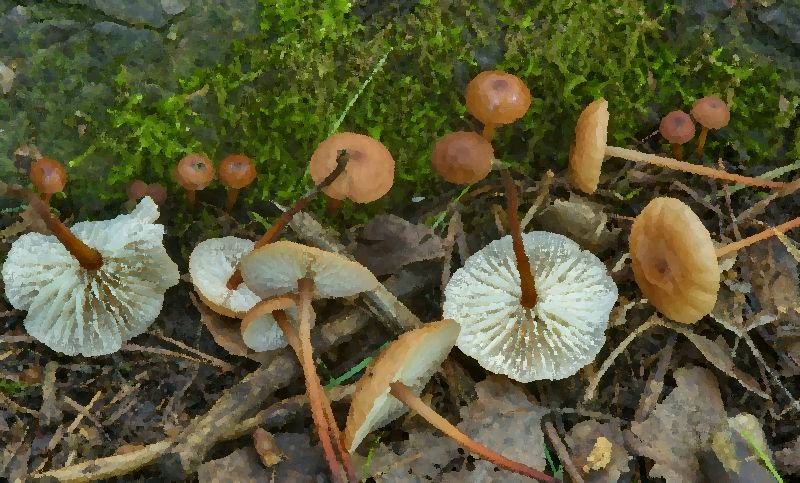

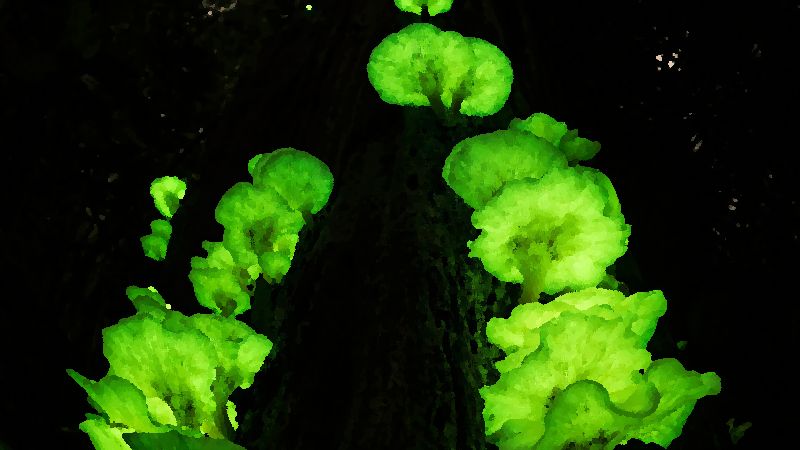

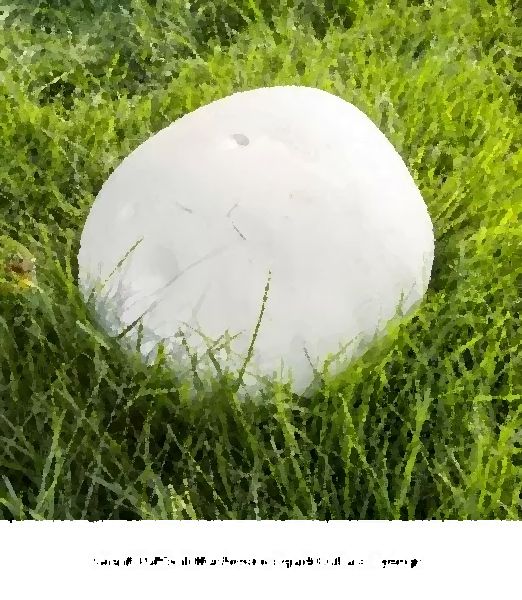
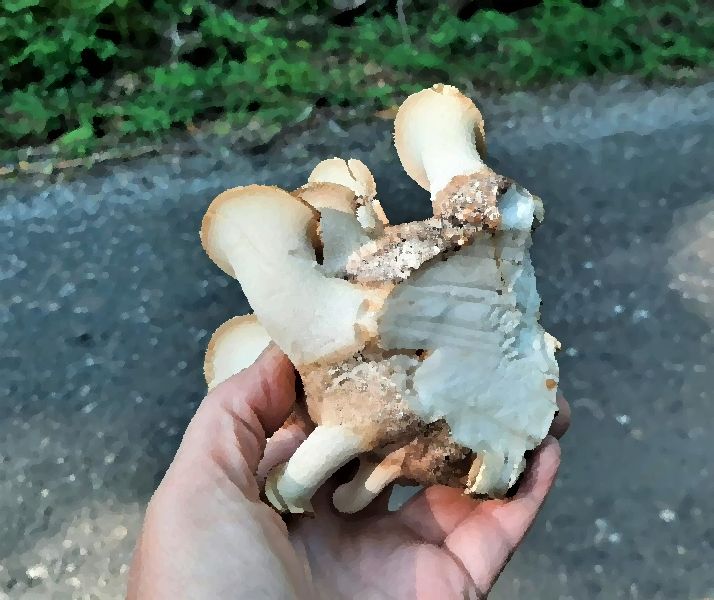
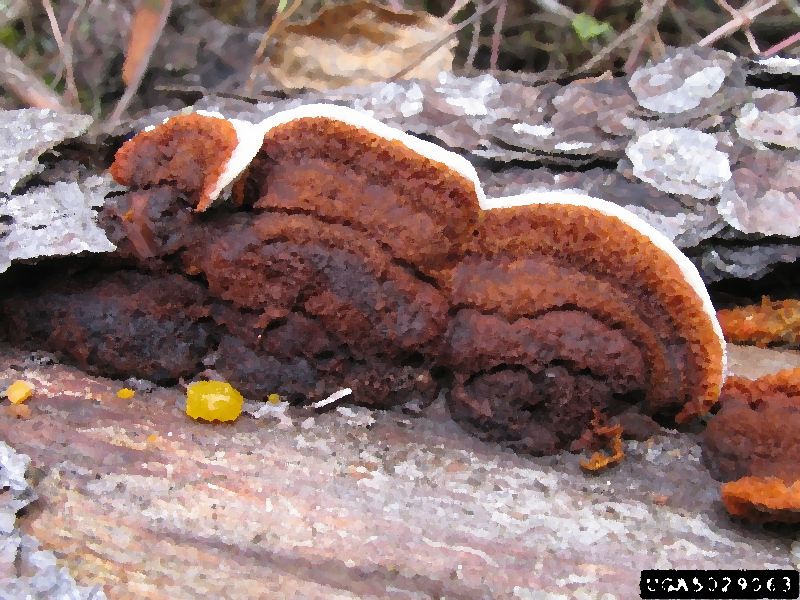
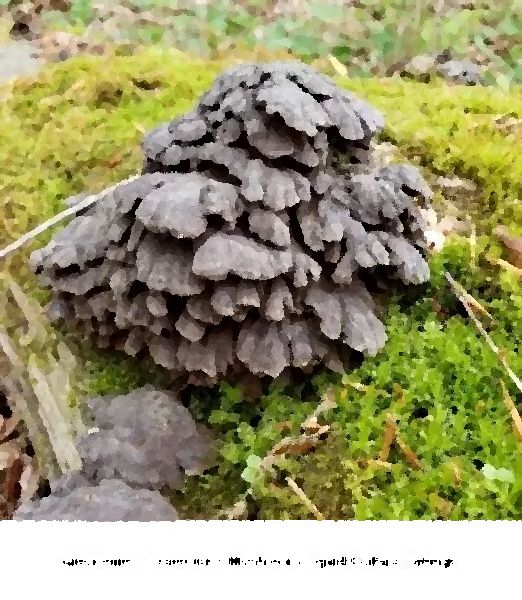
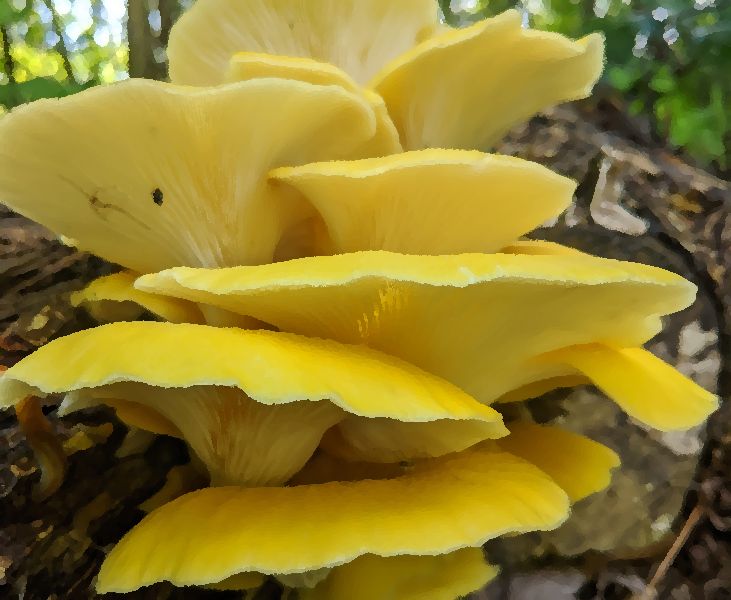

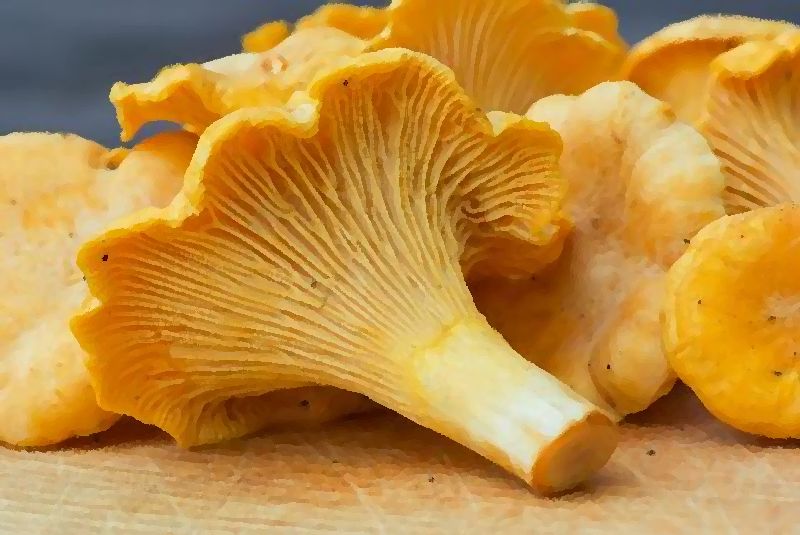


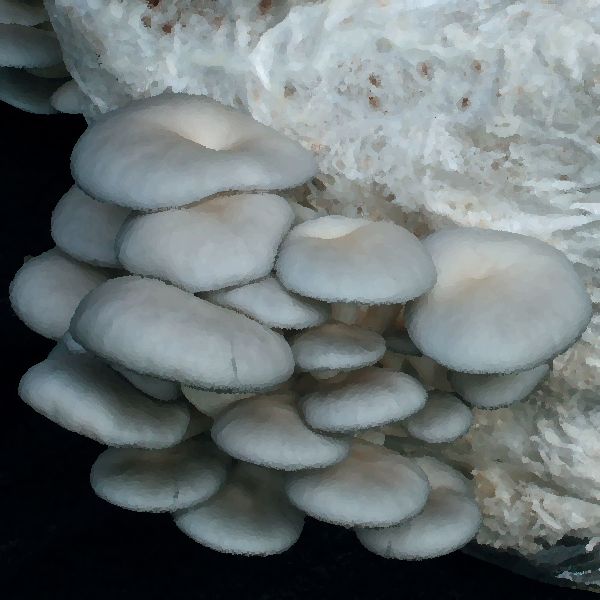
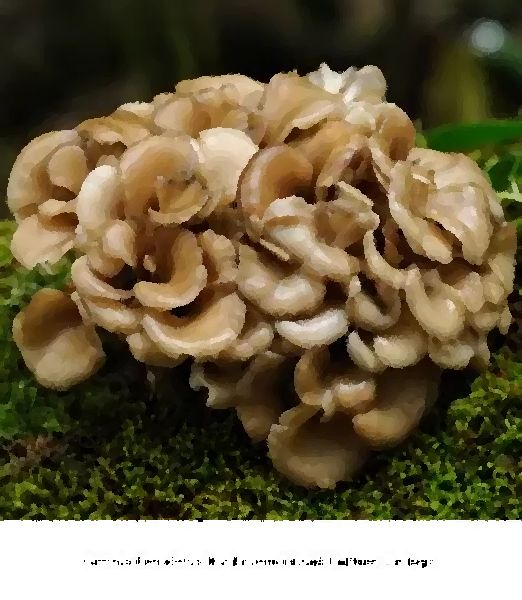
Ganoderma Formosanum
Scientific Name: Ganoderma formosanum
Description: Ganoderma Formosanum is a species of bracket fungus known for its large, kidney-shaped fruiting bodies. It has a reddish-brown to dark brown cap with a shiny, varnished appearance. The surface of the cap is often marked with concentric rings.
Habitat: It is commonly found on decaying logs and tree stumps in forests, particularly in tropical and subtropical regions.
Significance: Ganoderma Formosanum is highly valued in traditional medicine, particularly in East Asia, for its potential health benefits. It is believed to have immune-enhancing, anti-inflammatory, and antioxidant properties.
Ganoderma Megaloma
Scientific Name: Ganoderma megaloma
Description: Ganoderma Megaloma is a species of bracket fungus characterized by its large, fan-shaped fruiting bodies. The upper surface is brown to reddish-brown and typically covered in a layer of fine, velvety hairs. The underside has tiny pores.
Habitat: It is commonly found growing on decaying logs and tree trunks in forests, especially in tropical and subtropical regions.
Significance: Ganoderma Megaloma is valued in traditional medicine for its potential medicinal properties. It is believed to support immune function and overall well-being.
Ganoderma Neo
Scientific Name: Ganoderma neo-japonicum
Description: Ganoderma Neo is a species of bracket fungus known for its distinct fan-shaped fruiting bodies. The cap is brown with a velvety texture and concentric rings. The underside has tiny pores.
Habitat: It is typically found growing on dead or decaying trees in forests, particularly in Asia.
Significance: Ganoderma Neo is highly regarded for its medicinal properties and is used in traditional medicine for its potential immune-enhancing and antioxidant effects.
Ganoderma Polychromum
Scientific Name: Ganoderma polychromum
Description: Ganoderma Polychromum is a species of bracket fungus characterized by its large, kidney-shaped fruiting bodies. The cap is reddish-brown to dark brown with a glossy appearance. It has a smooth or slightly wrinkled surface.
Habitat: It is commonly found growing on decaying wood, particularly hardwood trees, in forests.
Significance: Ganoderma Polychromum has been used in traditional medicine for its potential health benefits. It is believed to possess immune-enhancing, anti-inflammatory, and antioxidant properties.
Ganoderma Sinense
Scientific Name: Ganoderma sinense
Description: Ganoderma Sinense is a species of bracket fungus with fan-shaped fruiting bodies. The cap is reddish-brown to dark brown, often with a shiny surface. The underside has tiny pores.
Habitat: It is commonly found growing on dead or decaying trees, particularly in subtropical and temperate regions.
Significance: Ganoderma Sinense is highly valued in traditional Chinese medicine for its potential health benefits. It is believed to have immune-modulating, anti-inflammatory, and antioxidant properties.
Ganoderma Tsugae
Scientific Name: Ganoderma tsugae
Description: Ganoderma Tsugae is a species of bracket fungus known for its large, fan-shaped fruiting bodies. The cap is reddish-brown to dark brown with a smooth or slightly wrinkled surface. The underside has tiny pores.
Habitat: It is commonly found growing on decaying conifer trees
, particularly in North America.
Significance: Ganoderma Tsugae is used in traditional medicine for its potential health benefits. It is believed to have immune-enhancing and antioxidant properties.
Garlic Scented Mushroom
Scientific Name: Marasmius alliaceus
Description: The Garlic Scented Mushroom is a small mushroom species with a convex cap and a thin stem. It has a distinct garlic-like odor, particularly when cooked. The cap color ranges from whitish to light brown.
Habitat: It is typically found in woodland areas, growing on decaying plant material, leaf litter, or forest debris.
Significance: The Garlic Scented Mushroom is valued for its culinary use, particularly in dishes where a garlic flavor is desired. It can be sautéed, added to soups, or used as a seasoning.
Ghost Fungus
Scientific Name: Omphalotus nidiformis
Description: The Ghost Fungus is a bioluminescent mushroom species known for its eerie greenish glow in the dark. It has a white to pale yellowish cap and gills. The stem is usually short and thick.
Habitat: It is commonly found growing on decaying wood, such as tree stumps or fallen logs, in tropical and subtropical regions.
Significance: The Ghost Fungus is primarily known for its bioluminescent properties, creating a captivating display in nighttime forest environments.
Giant Puffball Mushroom
Scientific Name: Calvatia gigantea
Description: The Giant Puffball Mushroom is a large, round mushroom species with a white to light brown outer skin. As it matures, the skin may crack or peel off, revealing a spore mass inside.
Habitat: It is typically found in open grassy areas, meadows, or fields.
Significance: The Giant Puffball Mushroom is highly regarded as an edible mushroom when harvested at a young stage, before the interior becomes spore-laden. It has a mild, delicate flavor and can be cooked in various ways.
Giant Sawgill Mushroom
Scientific Name: Neolentinus ponderosus
Description: The Giant Sawgill Mushroom is a large mushroom species with a distinctively serrated or toothed appearance on the underside of the cap. The cap is brownish-gray to dark brown, while the stem is thick and fibrous.
Habitat: It is commonly found growing on decaying wood, particularly coniferous trees.
Significance: The Giant Sawgill Mushroom is not widely consumed due to its tough and fibrous texture. It is primarily appreciated for its unique appearance and ecological role as a decomposer.
Gilled Polypore
Scientific Name: Coltricia perennis
Description: The Gilled Polypore is a mushroom species with a cap that resembles a traditional gilled mushroom. It has a brownish color and a wrinkled or cracked texture. The gills are pale yellow.
Habitat: It is commonly found on decaying wood, often near the base of trees in forests or woodland areas.
Significance: The Gilled Polypore is not widely recognized for culinary or medicinal purposes. It serves an important role in the ecosystem as a decomposer, breaking down organic matter.
Gold Enoki
Scientific Name: Flammulina velutipes var. velutipes ‘Golden Enoki’
Description: The Gold Enoki is a variety of the Enoki Mushroom with a vibrant golden-yellow color. It features long, slender stems and small, delicate caps.
Habitat: Gold Enoki mushrooms are commercially cultivated in controlled environments, mimicking their natural growing conditions.
Significance: Gold Enoki mushrooms are highly
regarded for their culinary value. They have a mild, slightly sweet flavor and a crisp texture. They are commonly used in stir-fries, soups, and salads.
Gold Oyster
Scientific Name: Pleurotus citrinopileatus
Description: The Gold Oyster is a species of oyster mushroom known for its striking golden-yellow color. It has a broad, fan-shaped cap with a velvety texture. The gills are pale yellow.
Habitat: Gold Oyster mushrooms are cultivated commercially or grown on hardwood logs.
Significance: Gold Oyster mushrooms are prized for their culinary use. They have a delicate, nutty flavor and a tender texture. They can be sautéed, grilled, or used in various dishes.
Golden Brown Beech
Scientific Name: Xerocomus subtomentosus
Description: The Golden Brown Beech is a medium-sized mushroom species with a convex to flat cap. The cap color ranges from golden-brown to reddish-brown. The stem is thick and often covered in fine hairs.
Habitat: It is commonly found in beech forests or mixed woodlands, often growing in close association with beech trees.
Significance: The Golden Brown Beech mushroom is appreciated for its culinary value. It has a mild, nutty flavor and a firm texture. It can be cooked in different ways, including sautéing, roasting, or adding to soups and stews.
Golden Chanterelle
Scientific Name: Cantharellus cibarius
Description: The Golden Chanterelle is a highly recognizable mushroom species with a vibrant golden-yellow to orange color. It has a funnel-shaped cap with distinctive ridges or wrinkles on the undersurface.
Habitat: It is commonly found in deciduous and coniferous forests, typically growing in symbiotic relationships with trees.
Significance: Golden Chanterelles are highly sought after for their culinary value. They have a delicate, fruity flavor and a meaty texture. They can be sautéed, used in sauces, or incorporated into various dishes.
Grey Dove Oyster
Scientific Name: Pleurotus ostreatus
Description: The Grey Dove Oyster is a variety of the Oyster Mushroom with a grayish color. It has a fan-shaped cap with a smooth or slightly wrinkled surface. The gills are white to pale gray.
Habitat: Grey Dove Oyster mushrooms are cultivated commercially or grown on hardwood logs.
Significance: Grey Dove Oyster mushrooms are prized for their culinary use. They have a mild, savory flavor and a tender texture. They can be sautéed, grilled, or used in a variety of dishes.
[Spreadsheet Summary]
| Mushroom Name | Scientific Name | Description | Habitat | Significance |
|---|---|---|---|---|
| Ganoderma Formosanum | Ganoderma formosanum | Large, kidney-shaped fruiting bodies | Tropical and subtropical regions | Highly valued in traditional medicine for potential health benefits |
| Ganoderma Megaloma | Ganoderma megaloma | Large, fan-shaped fruiting bodies | Forests, tropical and subtropical regions | Valued in traditional medicine for potential health benefits |
| Ganoderma Neo | Ganoderma neo-japonicum | Fan-shaped fruiting bodies | Forests, particularly in Asia | Highly regarded for medicinal properties |
| Ganoderma Polychromum | Ganoderma polychromum | Large, kidney-shaped fruiting bodies | Forests, woodland areas | Traditional medicine; potential health |
